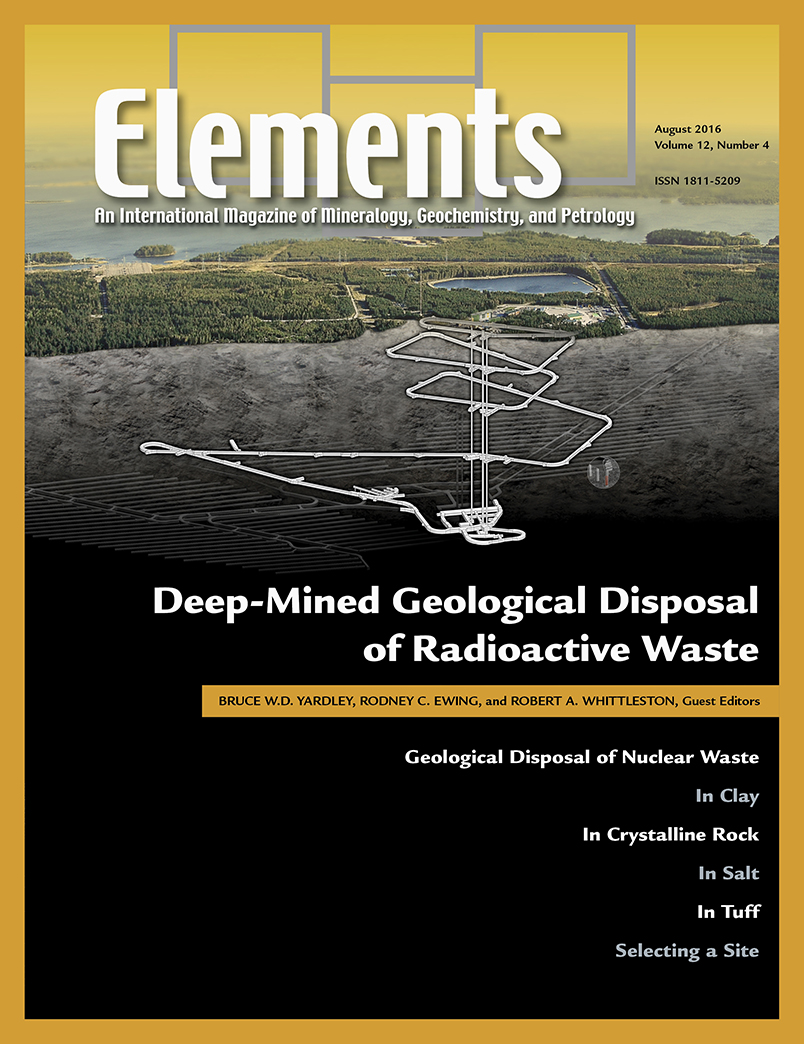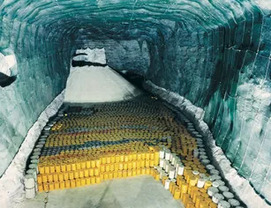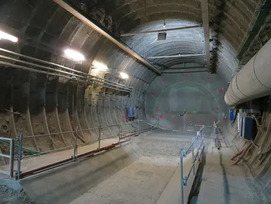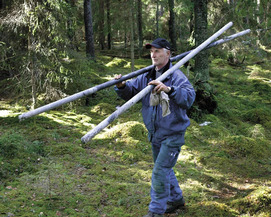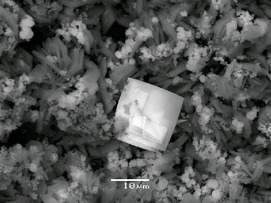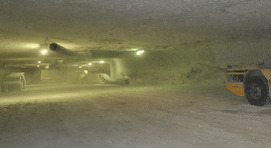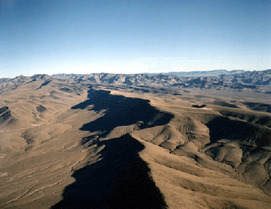
Deep-Mined Geological Disposal of Radioactive Waste
Bruce W.D. Yardley, Rodney C. Ewing, and Robert A. Whittleston – Guest Editors
Table of Contents
The construction of geological disposal facilities for radioactive waste will become a major focus of geological, mineralogical, and geochemical effort in coming years. Geological disposal raises complex technical issues, but it is also at the center of social and political controversy. Different countries have very different waste inventories and quantities of waste; they may also have different geological settings available to host a repository. The issue presents five case studies for the concepts for repositories hosted in clay, granite/gneiss, salt, and tuff. The varied approaches to selecting a site that is acceptable to local communities will be reviewed.
Analab
Australian Scientific Instruments (ASI)
Cameca
CrystalMaker
Elemental Scientific
Excalibur Mineral Corporation
Geochemist’s Workbench
International Centre for Diffraction Data
IsotopX
Montana Bureau of Mines and Geology
National Electrostatics Corp. (NEC)
PANalytical
Periodico di Mineralogia
ProtoXRD
Queen’s University
Savillex
Selfrag
Volume 12, Number 5 (October) • Studying the Earth Using LA-ICPMS
GUEST EDITORS: Paul J. Sylvester and Simon E. Jackson
Laser ablation – inductively coupled plasma mass spectrometry
(LA-ICPMS) is a mature, but still developing, micro-analytical technique that has allowed significant research advances in many areas of the Earth sciences. The method produces quantitative elemental and isotopic analyses on the micrometer scale of most solid, and some liquid, materials across most of the periodic table. A key strength of the method is that it can detect changing conditions or processes over time by analysis of growth zones or domains in minerals and other objects. Recent developments in rapid-wash out ablation cells and data handling software permit elemental and isotopic mapping of materials. Because both inorganic and organic materials can be analyzed, abiotic and biotic processes, and their interactions, can be studied. This issue of Elements highlights applications of LA-ICPMS across the broad range of disciplines of interest to the Earth, environmental, and biological sciences
that now rely on the technique and their interdisciplinary nature.
- Earth Sciences for Cultural Heritage (February 2016)
- Enigmatic Relationship Between Silicic Plutonic and Volcanic Rocks (April 2016)
- Cosmic Dust (June 2016)
- Geologic Disposal of Radioactive Waste (August 2016)
- Studying the Earth using LA-ICPMS (October 2016)
- Origins of Life: Transition from Geochemistry to Bio(geo)chemistry (December 2016)
Download 2016 Thematic Preview


